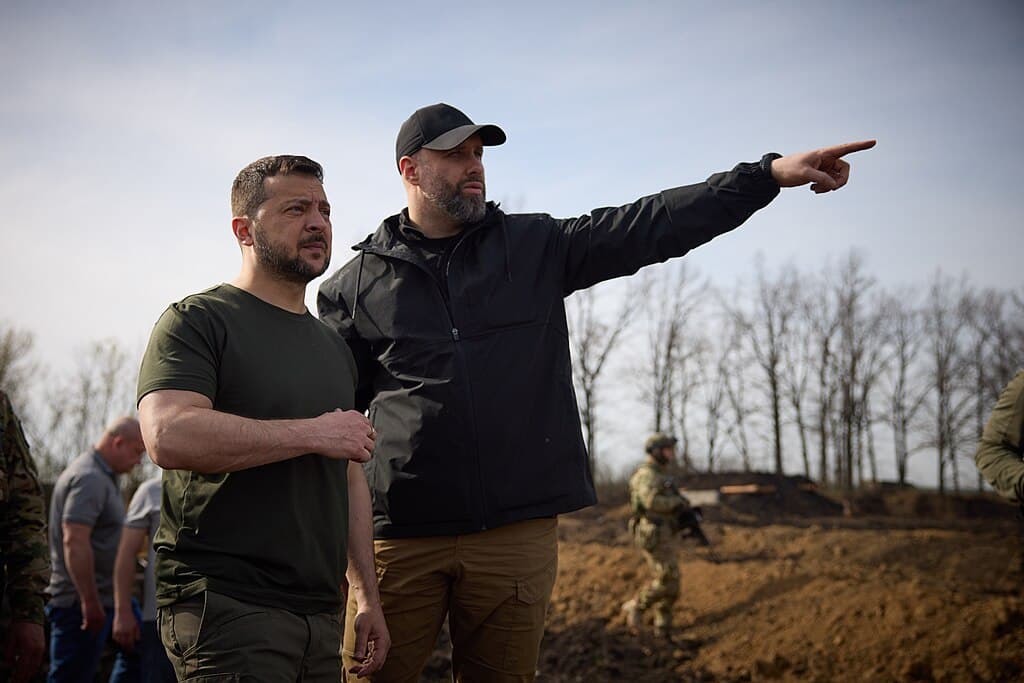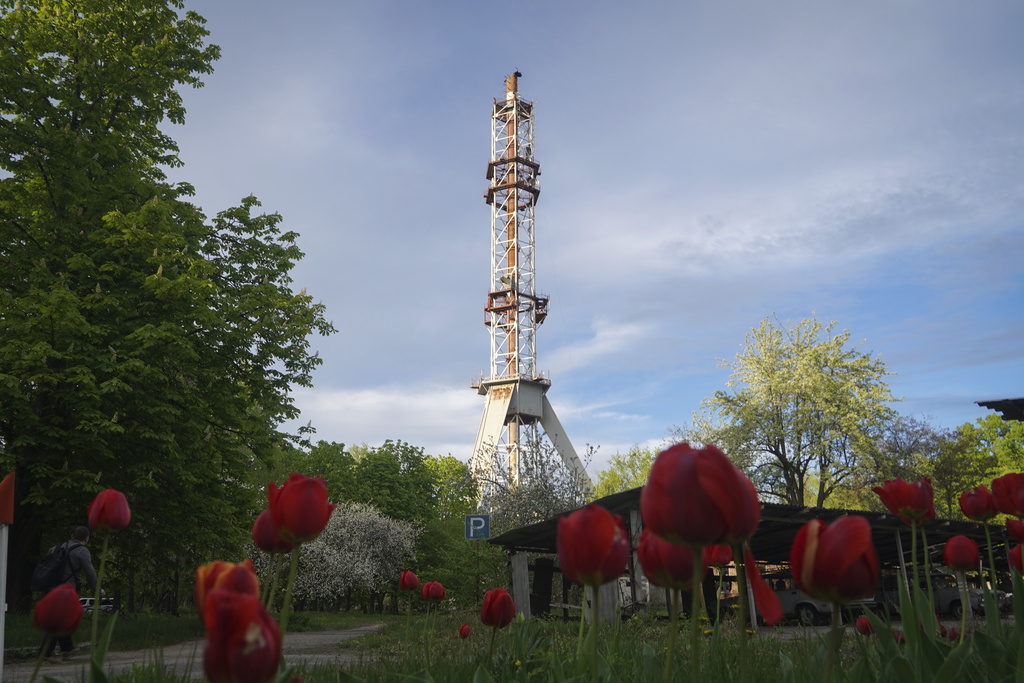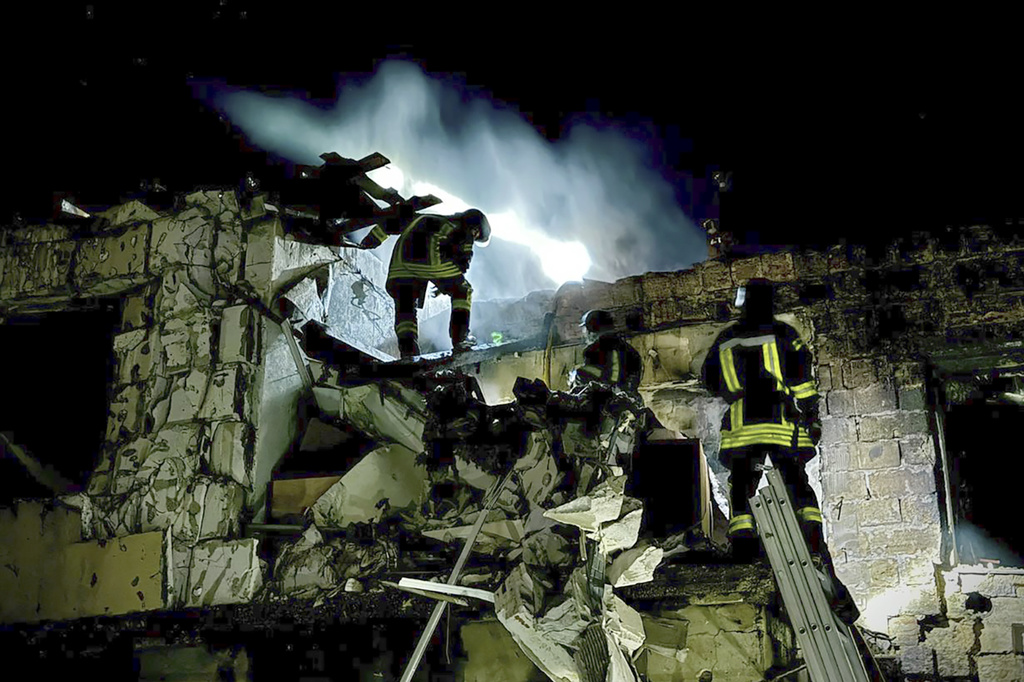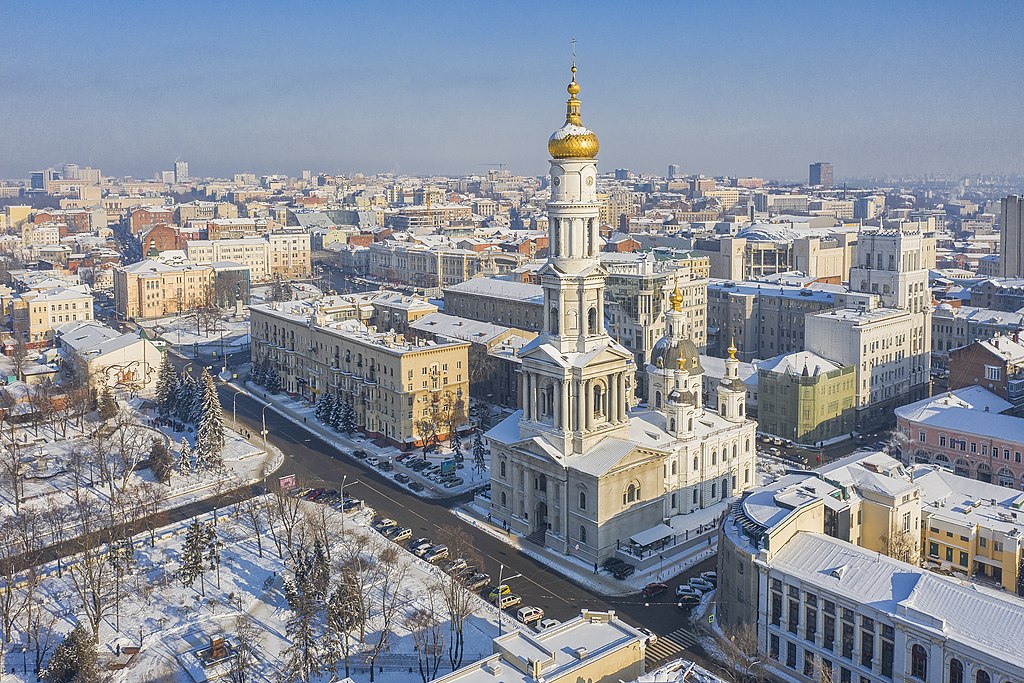Channeling Stalin, Putin Sets His Sights on Ukraine’s Kharkiv — Capital of a Future Quisling Republic?
Trivia question: What was the first capital of Soviet Ukraine? Answer: Kharkov, now known as Kharkiv

In an echo of Joseph Stalin’s policy toward Ukraine a century ago, President Putin yesterday launched an offensive against Kharkiv, Ukraine’s second largest city, 20 miles west of Russia. With armored units reportedly taking four Ukrainian villages, Kremlin propagandists say the goal is to create a 10-mile wide “sanitary corridor.” This buffer zone would hamper cross border shelling from the Ukrainian side.
President Zelensky warned President Biden in a telephone call last month: “It is Russia’s clear intention to make the city uninhabitable.” This spring, daily attacks by drones and rockets — including one Hwasong-11 ballistic missile made in North Korea — have cut in half the city’s landmark television tower, damaged hundreds of buildings, and knocked out the city’s two heat and power generating plants.
The bombing campaign has been accompanied by a Russian-led disinformation campaign designed to provoke a mass exodus from the city. “Many analysts believe Russia’s objective is to depopulate Kharkiv ahead of a summer offensive that will aim to seize the city and deliver a decisive blow to Ukrainian resistance” Kharkiv-based security analyst Maria Avdeeva writes Tuesday in an Atlantic Council Ukraine blog.

Mr. Putin, a history buff, undoubtedly is aware of how his ruthless predecessors handled Ukrainian nationalism. In 1919, the Bolsheviks saw Ukraine’s historic capital, Kyiv, as a Fort Apache, a loyal redoubt surrounded by hostiles. The Kremlin placed Ukraine’s capital in Kharkiv, right next to Russia’s border.
To remedy “the Ukraine problem,” Stalin designed the Holodomor, or death by hunger. Between 1932 and 1933, Stalin starved 4 million Ukrainians to death — about 13 percent of the population. In 1934, with the Ukrainian population sufficiently pacified, Stalin moved the capital to Kyiv in central Ukraine.
Today’s offensive against Kharkiv has a more recent precedent. In the first months of the 2022 full scale invasion of Ukraine, Russian generals launched an attack on the city. They thought it would fall easily. Kharkiv was a half hour drive from the Russian border and most of the population of 1.3 million were Russian-speakers.
Instead of rallying to the call of Moscow, however, about three quarters of the Kharkiv population fled west for safety, either to central Ukraine or to the European Union. Then, in a lightning offensive in the fall of 2022, Ukrainian troops expelled Russian troops from almost all of Kharkiv region.
In 2023, most of the city’s population returned. On their return, they discovered that Russian artillery and rockets had damaged or destroyed about one quarter of the city’s housing stock. Today, anti-Russian sentiment is high. Many if not most residents have switched to speaking in Ukrainian.
This weekend’s offensive was not a surprise to Ukrainian political and military leaders. Major General Vadym Skibitsky, deputy head of Ukrainian military intelligence, last week told the Economist that Russia had 35,000 troops across the border from Kharkiv and was planning to increase the number to as many as 70,000.
General Skibitsky said that this would not be enough to seize the city, but could enable Moscow to mount a “quick operation to come in and out.” At Kyiv yesterday, Mr. Zelensky told reporters: “Our military, our command knew about this and calculated their forces to meet the enemy with fire. Now there is a fierce battle in this direction.”

Some say, the attack is designed to draw Ukrainians troops off the 600-mile frontline. At dawn yesterday, after probing attacks with reconnaissance units, the Russians reportedly followed up with tanks. Civilians were evacuated from Vovchansk, a regional city with a pre-war population of 17,000. About 20 miles south of the city, a Russian rocket this morning blew up a dam across the Donets River. Serving as a causeway, the dam not only retained waters for the Pecheniy Reservoir, but also served as the only road crossing for a 30-mile stretch of the river.
Ukrainian military commanders had predicted that Russia would make its move before the arrival on the ground of American military aid, approved three weeks ago. To slow the arrival of aid, Russia has bombed Ukrainian railroads, including tracks in Kharkiv region last week. On Friday, Ukrainian commanders reported Russian troop buildups in three regions of Ukraine that border Russia — Kharkiv, Sumy, and Chernihiv.
“We have been anticipating that Russia would launch an offensive against Kharkiv, which appears now to have begun,” the White House national security spokesman, John Kirby, told reporters at Washington yesterday. “It is certainly possible that the Russians are setting themselves up for a larger assault on Kharkiv.”
Russian leaders have been coy about the goals of a cross-border attack. Foreign Minister Sergei Lavrov hinted last month that Kharkiv would play an “important role” in Mr. Putin’s plans to create a demilitarized “sanitary zone” inside Ukraine.
Chechen leader Ramzan Kadyrov told reporters Tuesday after Mr. Putin’s inauguration that Moscow, as a precondition for any peace talks, “must take Odessa and Kharkiv.”
In his inaugural speech, Mr Putin showed no signs of backing down on his invasion of Ukraine. On the contrary, some analysts speculate that he may see his March election and his May inauguration as mandates for mustering Russia’s remaining forces and resources for an extended war against Ukraine.

From Ukraine’s side, the historic and symbolic weight of Kharkiv means that it must be defended at all costs, Mr. Zelensky told Bild last month. He said: “Kharkiv is one of the capitals of Ukraine so it has great symbolic meaning.”
At Kharkiv itself, Mayor Ihor Terekhov warns that only air defenses will save the city from becoming a “second Aleppo.” Stopping rockets and drones is seen as key to defending a city sometimes called “the Boston of Ukraine” for hosting 38 colleges and universities.
“Kharkiv is now the focal point of Russia’s entire invasion and is in desperate need of increased air defenses,” Ms. Avdeeva writes from Kharkiv. “This is the only way to prevent it from becoming the largest in a long line of Ukrainian cities reduced to rubble by the Russian military.”

